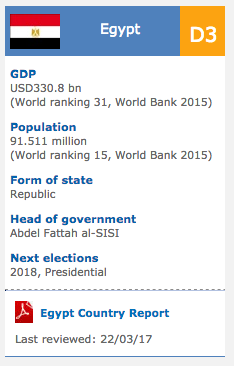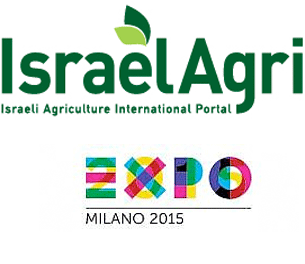Turkey: ANATOLIAN HANDICRAFTS Representing a Unique Cultural Heritage…
2011/03/16
Handicrafts/Giftware
- ANATOLIAN HANDICRAFTS
- CERAMICS
- GLASSWARE
- Turkish handmade
- TEXTILE ARTS
- METAL WORK
- LEATHER WORKING
- SILVER JEWELLERY
- EXPORTS
ANATOLIAN HANDICRAFTS
Representing a Unique Cultural Heritage…
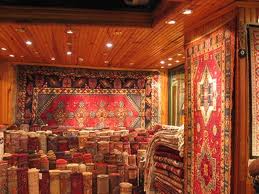 Turkey has inherited a rich culture from the past. The Central Anatolian plateau is considered one of the cradles of civilization. Here the Hattis, Hittites, Phrygians, Galatians, Romans, Byzantines, Seljuks and Ottomans established their rule. For ten millenia of history, the people of Anatolia have reflected these cultures in their art. Decorative arts in the life of the Turks date back to the 1 st Century B.C., however the most wonderful examples of decorative art were produced during the Seljuk and Ottoman periods.
Turkey has inherited a rich culture from the past. The Central Anatolian plateau is considered one of the cradles of civilization. Here the Hattis, Hittites, Phrygians, Galatians, Romans, Byzantines, Seljuks and Ottomans established their rule. For ten millenia of history, the people of Anatolia have reflected these cultures in their art. Decorative arts in the life of the Turks date back to the 1 st Century B.C., however the most wonderful examples of decorative art were produced during the Seljuk and Ottoman periods.
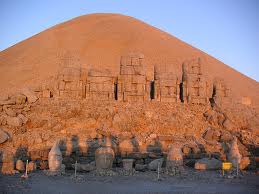 Turkish govermental bodies such as, DÖSİMM of The Ministry of Culture and Tourism, (Traditional Turkish Handicrafts Foundation), a nongovermental organisation and many other institutions have been trying to preserve and develop Turkish handicrafts. At present, Turkish craftsmen have been encouraged by the above mentioned authorities to produce the new types having traditional characteristics. Meanwhile, more and more pieces of modernstyle also have been designed and produced to fit the requirements of contemporary life styles.
Turkish govermental bodies such as, DÖSİMM of The Ministry of Culture and Tourism, (Traditional Turkish Handicrafts Foundation), a nongovermental organisation and many other institutions have been trying to preserve and develop Turkish handicrafts. At present, Turkish craftsmen have been encouraged by the above mentioned authorities to produce the new types having traditional characteristics. Meanwhile, more and more pieces of modernstyle also have been designed and produced to fit the requirements of contemporary life styles.
CERAMICS
From WorldFamous Iznik Tiles to Contemporary Designs…
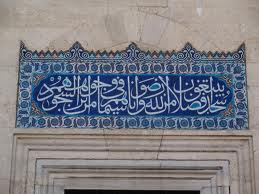 Tile making was the most distinctive element of the Seljuk and Ottoman arts used in interior and exterior architecture. İznik ( earlier called Nicaea), Kütahya and Çanakkale (Dardanel) were the three most important centers for tile and ceramics production. Iznik developed into a prominent ceramics center during the 15 th and 16 th centuries. Ceramics made of white paste and decorated with blue patterns on white surfaces with floral and leaf patterns, especially tulips were the preferred tile motifs. Even today, Turkish ceramics in İznik style are world famous.
Tile making was the most distinctive element of the Seljuk and Ottoman arts used in interior and exterior architecture. İznik ( earlier called Nicaea), Kütahya and Çanakkale (Dardanel) were the three most important centers for tile and ceramics production. Iznik developed into a prominent ceramics center during the 15 th and 16 th centuries. Ceramics made of white paste and decorated with blue patterns on white surfaces with floral and leaf patterns, especially tulips were the preferred tile motifs. Even today, Turkish ceramics in İznik style are world famous.
New ceramic styles emerged in Kütahya and Çanakkale during the 15 th and 17 th centuries, respectively, and are known by the names of their region. With their distinctive styles, colour characteristics, patterns and forms, they provide fine examples of the arts of ceramicware and tiles during the Ottoman period.
At present, both the traditional types of ceramics and modern pieces are produced in Turkey. Almost all of the large companies are in the Kütahya and İstanbul regions.
In addition, there are also various smallscale firms and hundreds of small workshops in the industry, most of which were established in Kütahya.
GLASSWARE
 A Wide Range of Products From Unique Examples of Historical Value to Functional, Modern Items… The Turkish art of glass making began in the Seljuk period and developed rapidly during the Ottoman Empire. The center of glass production was İstanbul at that time.
A Wide Range of Products From Unique Examples of Historical Value to Functional, Modern Items… The Turkish art of glass making began in the Seljuk period and developed rapidly during the Ottoman Empire. The center of glass production was İstanbul at that time.
TUREKISH HANDMADE
glassware has a good reputation abroad and best reflects Turkish art. Today, the number of glass products reaches thousands of items including handmade and machinemade products.
There is a special kind of glass, called “Çesmi Bülbül” (the eye of the nightingale) which is an entirely Turkish art. This famous design, distinguished by swirls of blue and white lines in clear glass, is mostly used on decanters, vases, flasks and candy boxes. There is another very special kind of glass, called “Beykoz” which takes its name from the place and the workshop where it was originally produced at the end of the 18 th century.
Historically, the forms and decorations of Beykoz glassware were meticulously created and were the most outstanding glassware of their time. They were all decorated by using 24 carat gold on colourless or coloured and opal glass. There is another traditional glassware called a “blue eye bead”, an authentic amulet consisting of blue, white and yellow, the eye against the evil eye. Its uniqueness among other blue beads in the world lies in its concentric colour combination resembling an eye. Currently, reproductions of unique examples from the historic art of Turkish glass making, in addition to a very wide range of modern glass items are produced. “Turkiye Sise ve Cam Fab. A.S” is a group of companies in the sector, which ranks third in the world and second in Europe in the production of glass tableware and ornaments. There are also various smallscale firms and workshops in the sector.
TEXTILE ARTS
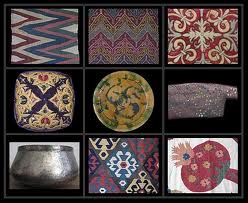 Hand Woven Clothes and Fabrics, Carpets and Rugs, Lace, Embroidered and Quilted Fabrics and Needlework. All of Exquisite Beauty…
Hand Woven Clothes and Fabrics, Carpets and Rugs, Lace, Embroidered and Quilted Fabrics and Needlework. All of Exquisite Beauty…
Traditional Turkish textile based handicrafts were inspired by a rich source molded and shaped by numerous cultures succeeding each other for thousands of years. Anatolian carpets and rugs, with their colours, motifs, patterns and superior quality, have a universal reputation and are cherished for hundreds of years. Traditional Turkish carpet weaving with its wellknown Turkish knot has been preserved with remarkable purity, faithfully keeping the original designs and colour combinations of each region of production. Each production area gives its name to the carpet which it produces, which is usually associated with a particular design and colour scheme. Among the best known production provinces are “Hereke, “Istanbul”, “Kayseri”, “Yahyalı”, “Karaman”, “Sivas” and “Isparta”. Turkish rugs generally use wool or silk as the material. Amongst various kinds of Turkish rugs, “Kilim”, “Cicim”, “Zili” and “Kolan” .
Lace, which is commonly used in many textile applications, especially in home textiles, is originally a Turkish handicraft. It is an embrodiery art reaching back to the mid1500s and crowned by the labor of Turkish women. It is an outstanding handicraft with its traditional taste and motifs in different colours and lines wich are now reflected in modern home decoration.
Traditional fabrics used both in clothes and home textiles, especially those of Denizli and Kastamonu provinces like “Buldan fabric”, “Selalmaz cemberi” and “Azdavay cemberi” are famous worldwide.
METAL WORK
Handicrafts of HandBeaten Copper, Brass, Silver and Bronze Reflecting Both the Past and the Present…
During the Bronze Age, inhabitants of Anatolia managed to obtain bronze with tin and using this alloy produced receptacles and ornamental objects. They also produced copper, gold and silver objects for religious or daily purposes using the techniques of forging and casting.
All the civilizations which have inhabited Anatolia added their styles and values in working metals which are still reflected in the articles of our day. Copper plates, bowls and trays for famous Turkish food, coffee sets, kettles, buckets, narghiles (water pipes) which are waterfiltered tobacco smoking equipment are examples of handbeaten copper articles.
Animal figurines, coffee and spice mills, shoe shiners’ boxes, mortars etc. made of brass; small statuettes, figurines, letter openers, boxes, key rings, lighter cases, mirror frames, bowls and trays made of silver; bells, mortars, small statuettes etc. are numerous examples of metal handicrafts.
HANDICRAFTS OF GEMSTONES AND MINERALS
Meerschaum, Black Amber, Marble and More…
Due to the variability and richness of its geological structure, working with gemstones has been carried out in Anatolia since prehistoric times. The “Oltu stone” which is known as “Black amber” extracted from the district of Oltu in Erzurum is used in making rosaries, cigarette holders and jewellery generally in combination with silver. Oltu stone is found only in Turkey, in the above mentioned district. Underground, it is soft in its fossil form. When it comes in contact with air after it is extracted, it hardens. This stone discharges the static electricity in the human body and in that way it is somewhat of a remedy for stress. Oltu stone stays shiny as long as it is used and it does not react with human sweat and leaves no traces on the skin. The finest quality of meerschaum reserves exist in Turkey. Meerschaum is not a type of earth or mineral, but is composed of decaying molluscs, which are subject to chemical changes. Although meerschaum exists in various parts of Turkey, the best quality is excavated in Eskişehir. Various products, such as cigarette holders, pipes, ashtrays, candle holders, vases, boxes, lampstands, necklaces, earrings and bracelets are made of meerschaum. Meerschaum cigarette holders and pipes have the property of absorbin the nicotine in tobacco to some extent.
Marble, and especially onyx, objects such as chests, boxes, fruit stands, bowls, ashtrays, vases, stationary items are produced widely since marble sources exist in ample amounts in Anatolia.
The other current “Gemologic” products of Turkey are chalcedony found in the vicinity of Eskisehir, agate found in the vicinity of Ankara, chrysoprase of Balikesir, and the opals of Kutahya. Today, as a popular hobby item, gemstones have assumed decorative meanings beyond their use in jewellery.
LEATHER WORKING
Still Creating Lovely Examples of Traditional Turkish Handicrafts…
Leather and leather working is a deep rooted branch of art in Turkey. Turks have used leather since early times and leather has played a prominent role in their clothing and daily life.
Leather handbags, purses and belts, desk sets, boxes, rawhide shoes, chessboards, photo frames, address books, lighter cases, key rings, similar products and many more are widely produced in Turkey.
Leather and “Kilim”, a sort of Turkish rug are often used together in making the articles such as handbags, travel bags, purses, notebook cases, vests etc. which are wellknown samples of Turkish handicrafts.
WOODWORKING
Surviving Down to Our Age From the Distant Past…
Wood carving has a profound place in Ottoman civil architecture, the best examples of which are found in the wooden mosques of that time. The central boss on ceilings, the paddle boxes on fireplaces, cupboard wings and doors found in houses are decorated with the finest, lacelike carvings.
The carved wood was enriched by mother of pearl, ivory, gold, silver, precious stones, bone and tortoise shell inlays in the early Ottoman art of wood carving. The art of wood carving in Anatolia is greatly influenced by the arts applied on stone, leather, ceramics and embroidery and uses similar motifs.
Small tables, tables, boxes, reading stools, wall shelves inlaid with mother of pearl, walking sticks, mirror frames photo frames, jewellery boxes with gold gilt decoration, trousseau chests with metal ornaments, backgammon sets, objects of carved wood, musical instruments like small violins, horns and lutes are numerous examples of wood articles currently made in Turkey.
SILVER JEWELLERY
Reflecting a Rich Cultural Heritage Combined With Contemporary Designs…
Turkey has a long history of silver craftmanship including classical products of bygone days and current silver products which are very popular export items. The art of gold and silver jewellery has an important place in traditional Turkish metal working. According to the findings being evaluated from archeological excavations, the art of telkari has been an old tradition in Turkey since the 15 th century. Telkari handicraftmanship is a jewellery decoration. It is also named “ vav working” . Telkari which has a special place in traditional handicrafts, is a symbol of the decoration concept of Turkish culture, excellence and elegance. MardinMidyat, AnkaraBeypazarı and Trabzon are the most important centers for the Telkari handcrafted production in Turkey.
Today, Turkish silver jewellry manufacturers are creating modern and decorative pieces of silver art by using a combination of ancient and modern technologies, ancient and contemporary designs with high quality finishing.
EXPORTS
The total Turkish handicraft and giftware exports totalled US $ 240 million in 2009. Handmade carpets had the largest share in exports. The total value of hand made carpets exported in 2009 was about US $ 115 million. Major export markets are the USA, Japan and Belgium.
The next largest product group in the exports was silver jewelry. Turkish silver jewellery sector has increased its exports significantly in the past ten years. The export value of silver jewellery reached US $ 68 million in 2009. Major destination countries are the USA, Germany and United Arab Emirates.
- Related Articles
-
Turkey Business Practices
2011/09/13 Business Practices Business hours Religion and holidays Public holidays in Turkey Business meetings Meeting schedule Usual business language Business gifts -
IMF Data & Forecasts
2011/08/12 IMF Data & Forecasts 2010 2015 Scale Units GDP at constant prices -
Turkey Waste Profile 2011
2011/07/08 Waste (Turkey) Why should we care about this issue Solid Waste Management plays a crucial role in terms of community health and protecting the environment and is vitally important for the country. Increasing solid waste volumes due to population growth, technological development, industrialisation and urbanisation have become a major environmental problem. -
Turkey Freshwater Profile 2011
2011/07/08 Freshwater (Turkey) Why should we care about this issue Freshwater - Why care? (Turkey) In Turkey, the effective use of water resources and protection of those resources have become essential as a result of population increase, rapid urbanization and industrialization. -
Turkey Land use Profile 2011
2011/07/08 Land use (Turkey) Why should we care about this issue Land use - Why care? (Turkey)
-
- Turkey News
-
- AFGHANISTAN: UNWTO: International tourism – strongest half-year results since 2010
- TURKEY: Turkey relocates medieval tomb over flooding risk
- QATAR: First Qatar-Turkey refrigerated container route opens
- RUSSIA: Russia, Turkey negotiate deals worth $820 million
- TURKEY: Turkey urges Erbil to cancel referendum on independence
- TURKEY: Erdogan: Fight against drug addiction one of Turkey’s priorities
- Trending Articles
-
- CHINA: China welcomes Guinea to take part in Belt and Road Initiative
- CAMEROON: Poor End of Year Results for Cameroon Students
- CHINA: Chinese-supported infrastructure projects change Zambia's landscape
- UNITED STATES: Spotify, Hulu target students with discounted bundle
- UGANDA: Ugandan Govt Starts Verifying International Academy Teachers
- AUSTRALIA: Queensland Bauxite Gains State Approval of Mineral Development Work Program



